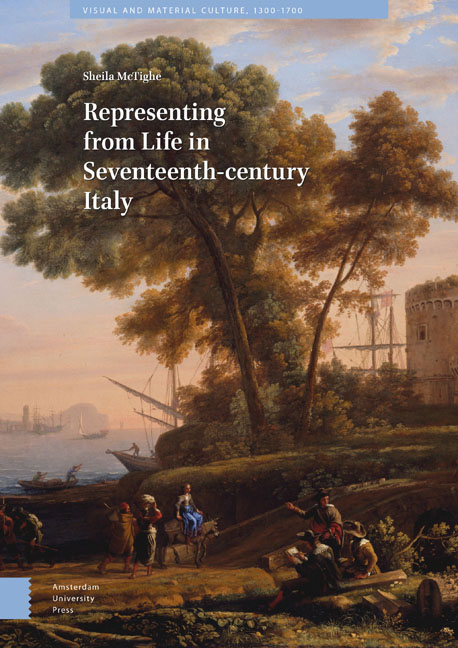Book contents
- Frontmatter
- Acknowledgements
- Contents
- Illustration List
- Introduction: Depicting from Life
- 1 Caravaggio’s Physiognomy
- 2 Jacques Callot, Drawing Dal Vivo around 1620: Commerce in Florence, Piracy on the High Seas
- 3 Jacques Callot’s Capricci di varie figure (1617): The Allusive Imagery of the Everyday, Represented ‘from Life’ and Emulating a Text
- 4 The Motif of the Shooting Man, and Capturing the Urban Scene: Claude Lorrain and the Bamboccianti
- 5 The Absent Eyewitness: the Revolt of Masaniello and Depiction Dal Vivo in the Middle of the Seventeenth Century
- Conclusion
- Index
5 - The Absent Eyewitness: the Revolt of Masaniello and Depiction Dal Vivo in the Middle of the Seventeenth Century
Published online by Cambridge University Press: 21 November 2020
- Frontmatter
- Acknowledgements
- Contents
- Illustration List
- Introduction: Depicting from Life
- 1 Caravaggio’s Physiognomy
- 2 Jacques Callot, Drawing Dal Vivo around 1620: Commerce in Florence, Piracy on the High Seas
- 3 Jacques Callot’s Capricci di varie figure (1617): The Allusive Imagery of the Everyday, Represented ‘from Life’ and Emulating a Text
- 4 The Motif of the Shooting Man, and Capturing the Urban Scene: Claude Lorrain and the Bamboccianti
- 5 The Absent Eyewitness: the Revolt of Masaniello and Depiction Dal Vivo in the Middle of the Seventeenth Century
- Conclusion
- Index
Summary
Abstract
When Michelangelo Cerquozzi, the sole Italian follower of Pieter van Laer, depicted the Neapolitan uprising in 1648, Masaniello's revolution was still ongoing. A topographic view of the market in Naples’ s piazza del Carmine, Cerquozzi's composition resembles Callot's Fair at Impruneta in its capturing of a recognizable market setting crowded with people. Much was made in later scholarship of its being an eye-witnessed depiction, a journalistic first-hand report. Contemporary commentators, to the contrary, stressed that Cerquozzi was not there, and found it an object of wonder for being made from life in a curious form of absent witnessing. In this, the painting resembles seventeenth-century printed siege views, which were often topographically accurate, but reconstructed from maps, plans and verbal accounts.
Keywords: Cardinal Spada, Siege of Breda, curiosity collections, Siege of La Rochelle
One painting by an Italian follower of Bamboccio seems to gather together several issues that recur within the practice of painting from life in Italy. Perhaps the best known bambocciata of all, Michelangelo Cerquozzi's The Revolt of Masaniello represented from life the infamous uprising of the poor in the city of Naples during 1647 (Fig. 82). It has been called the first painting of contemporary history, as if it anticipated The Death of Wolfe or The Raft of the Medusa. To its contemporaries, its significance lay elsewhere, in the premise that it had the peculiar authority of images depicted dal vivo, ad vivum, made in the closest proximity to its models.
Whether or not it was actually depicted on site, the painting's composition was certainly also modelled on Callot's famous print The Fair at Impruneta, discussed in Chapter 2 (Fig. 29). Unlike Callot's peaceful image combining a secular fair with a religious procession, Cerquozzi's painting shows a market that is veering from commerce into violence. The fisherman-revolutionary, red-capped Masaniello, has mounted a donkey at the bottom center of the composition, and surges toward the people's foes, the Spanish tax collectors in the left corner, who are coming under attack from bystanders.
- Type
- Chapter
- Information
- Representing from Life in Seventeenth-century Italy , pp. 221 - 244Publisher: Amsterdam University PressPrint publication year: 2020



